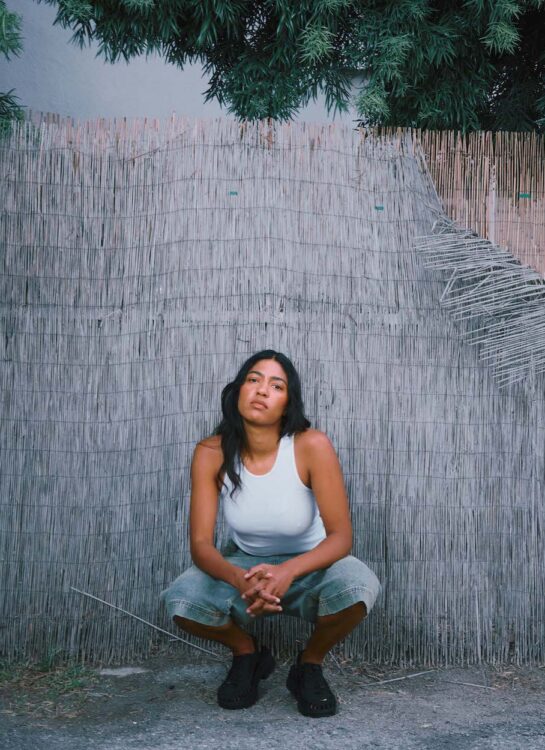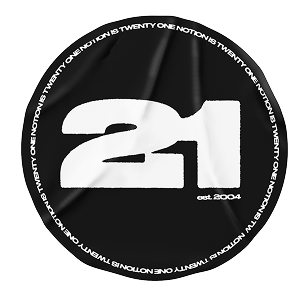In collaboration with

- Words Kitty Robson
- Photographer, Director and Producer Sonali Ohrie
- Stylist Dre Romero
- Hair and Makeup Artist Patrick Santa Ana
- First Assistant Conner Dodenhoff
- DOP Patrick Lewey
- Video Editor Eben Goode
- Lighting Designer and Producer Mike Anderson
- Digi Tech Zach Arquillevich
- Gaffer Assistant Rafael Llamas
- Photography Assistant Shane Adams
Rising artist Hope Tala reflects on Hope Handwritten, coming of age, queerness, and why music and fashion are acts of storytelling.

Hope Tala wears KEEN
Emerging from a haze of introspection and sonic experimentation, Hope Tala arrives at a creative crossroads with her first full-length project Hope Handwritten, an album that feels less like a debut and more like a memoir in motion. The West London artist, known for her genre-blurring blend of alternative R&B, soulful lyricism and literary finesse, spent over three years meticulously piecing together a body of work that charts the messy, magical terrain of early adulthood. As she steps offstage in Atlanta and into the next chapter of a whirlwind tour, Hope speaks with the same clarity and candour that echo through her music about vulnerability, perfectionism, and finding light in life’s darkest rooms.
“It’s definitely cathartic,” Hope shares when we talk about the album finally being out in the world. “I’d gone through a lot of change, turmoil and personal struggle in the years that I was writing this album; that is definitely reflected in the songs. It feels good to let that go in a way, in terms of releasing the music.” A journey which took Hope three and a bit years to complete, the road to Hope Handwritten was one of trial and tribulation, as the rising star was thrown into the deep end of life.
“In the years I was writing the album I was feeling a lot of despair, not feeling hopeful or excited about the future,” Hope confides. “I’d spent my whole life up to that point as a very mentally stable person; I had a simple and great childhood, did really well in school. I suppose I was really sheltered. Coming out into the world after university, I experienced the world in a different way and realised that life can be so shit. I had this sense of malaise. It affected my day-to-day attitude and emotions. I had a lot going on in my life personally and this album just charts a few years where I wanted to feel hopeful again; about life, about the future and about humanity in general.”

- Full Look Entire Studios
- Shoes KEEN

- Dress Taottao
- Bra Taottao
- Trousers Los Angeles Apparel
- Shoes KEEN

Out of this, though, Hope’s album offers just that: hope. Running through the album is this sense of optimism in spite of difficulty, a sentiment that she didn’t realise was so paramount to the project until its completion. “I think I only came to the realisation that hope was the main theme of the album super late in the process,” the artist explains, “and I’d already landed on the title much earlier on”. A moment of kismet, Hope’s album ended up a beacon, a light in the darkness for both herself and her listeners. “I’ve already had some really lovely messages and interactions with people who found it useful to hear that music,” she muses, “who’ve been using it to process and experience their own pain but also joy. It’s cool to be in people’s lives in that way, having my songs be important to even just a few people is all I could ever dream of.”
A vital exploration of love, loss and everything in between, the album operates as somewhat of a musical bildungsroman – a sonic coming-of-age story shaped by both experience and literary influence. “I started to realise at some point during the writing process, that it felt like I was writing a coming-of-age novel in writing form,” Hope explains, reflecting on how the sequencing of the songs mirrored the narrative arc of growing up. As an English Literature graduate and self-proclaimed book nerd, she draws inspiration from texts like Toni Morrison’s Beloved, which “completely changed my life,” and helped shape introspective tracks like ‘Survival’. Just as a novel captures a character’s transformation, Hope Handwritten charts her own – from sheltered student to emotionally awakened artist.
“A really important theme [in Hope Handwritten] is growing up and entering the world, things like falling in and out of love as well, but the growing up aspect is really the overarching theme. I experienced a lot more change in the years after I left university and entered the world, than I did even from my teenage years into adulthood. My twenties have had a lot of change. I think that’s a really significant throughline in the album.”


- Shorts Entire Studios
- Shoes KEEN
This sense of self-excavation and expression expands beyond her sound. Just as she’s navigated emotional growing pains in her songwriting, Hope Tala has also been quietly but confidently carving out space for herself as a queer artist – stylistically, personally, and creatively. “I don’t think much about my style, it’s all gut instinct,” she says, describing her fashion as fluid and comfort-driven, shaped since her teens by an affinity for “masculine clothes, what the world calls menswear.”
For Hope, alike many artists, clothing isn’t just aesthetic, it’s expressive: “We’re all telling a story,” she says, “whether that’s making music or just the clothes we put on every day.” In our accompanying digital cover story, shot in Hope’s new hometown of LA, she pairs soft tailoring with rugged KEEN footwear, subtly subverting traditional binaries with every look. Her style, like her music, resists tidy categorisation – soft as it is strong, and entirely her own. In a culture increasingly embracing nonconformity, Hope’s approach feels both intimate and quietly radical: “To me, it’s all about being comfortable and being happy.”
Hope Handwritten may have been born out of personal upheaval, but it has ultimately been an act of healing, for both its creator and her listeners. “Part of it I just needed to write for personal reasons,” Hope tells us, “I was trying to do both… have this cathartic writing experience but also make something that was really great.” Drawing on a love of literature and her own lived experience, she crafted something utterly unique. Its emotional weight, influenced by transformative reads like Beloved and Karen Joy Fowler’s We Are All Completely Beside Ourselves, echoes that sense of navigating identity, family, and becoming. Coming-of-age, for Hope and many of us, doesn’t belong solely to adolescence; it stretches well into adulthood, shaped by heartbreak, creative pressure, and the sharp-edged beauty of change.
Now, on the other side of release, Hope Tala finds herself in a new relationship with the music, one shaped not by solitude, but connection. Sometimes afraid that offering something so raw to the world could alter Hope’s own relationship with her work, now, we discuss, performing the album on tour and at festivals has become its own kind of therapy. “When you play these songs live, it’s like they take on a new life,” she says. “It’s great to play those songs live, hopefully for a long way.”
With a growing fanbase, festival slots – she just killed it at Coachella for the first time – and support dates with Halsey on the horizon, Hope is embracing a more open, ambitious future. She’s already writing prolifically – “I’m planning on releasing an album a year for the foreseeable” – but this next chapter feels less about unravelling and more about intention. Still guided by instinct, but now with clearer eyes and sharper tools, Hope Tala is building something lasting: grounded in emotion, fed by story, and charged with possibility.
Hope Handwritten is out now, listen below. Shop KEEN online here now.




